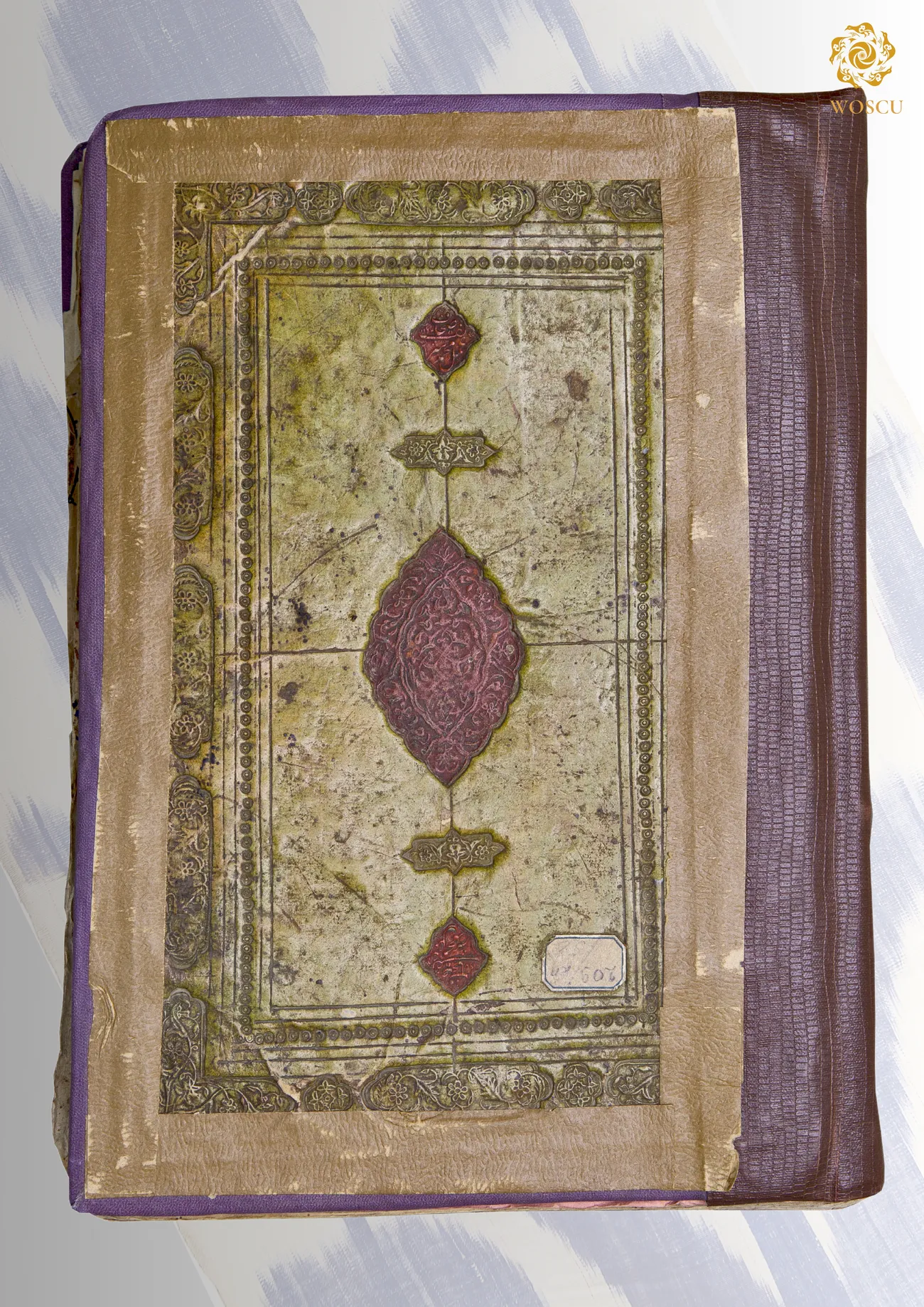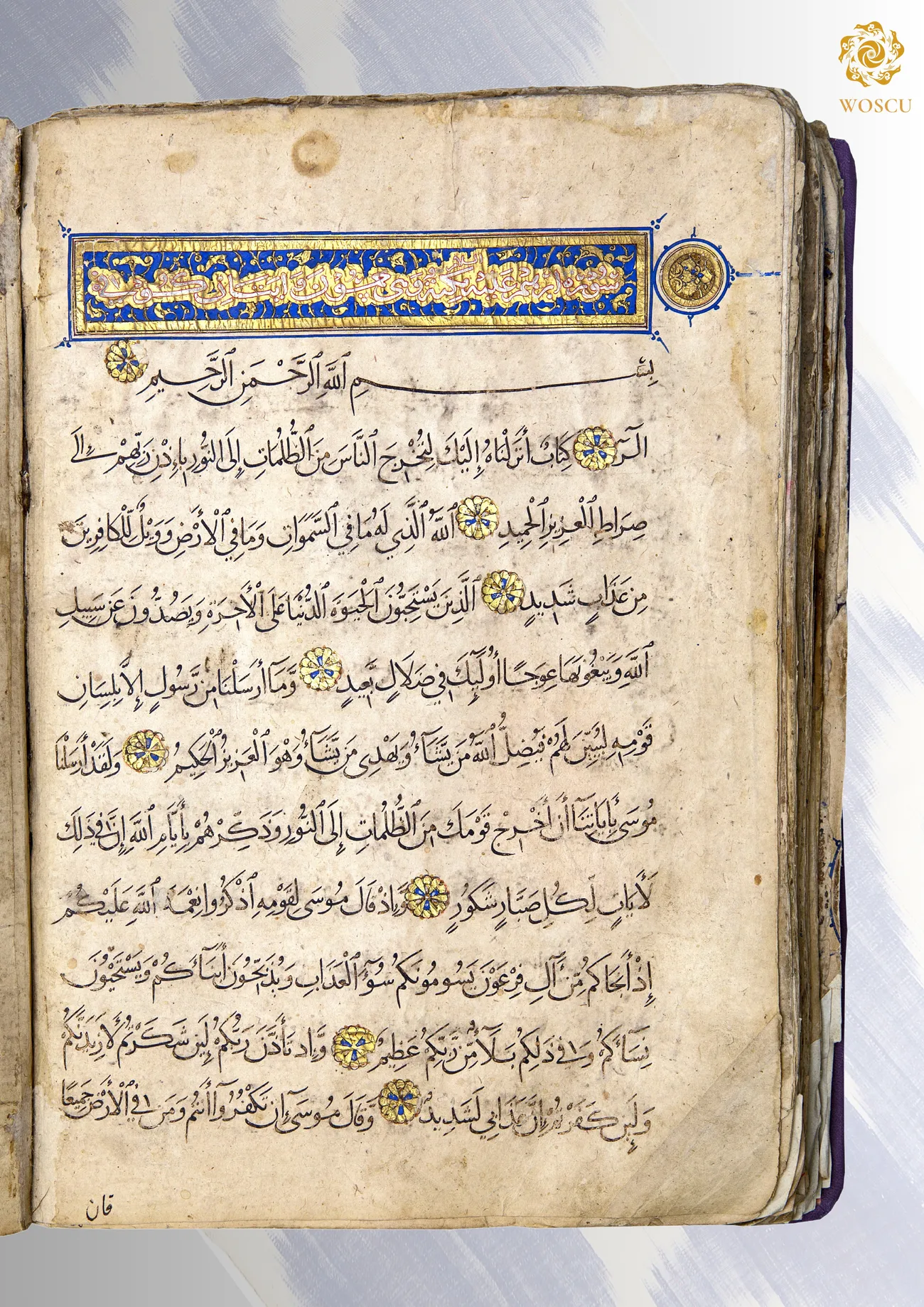One of the largest copies of the Qur’an was written in Thuluth (Inventory No. 3962). Judging by the letter, paper and other signs, it was transcribed in the 12th century by a special order for the library of Sultan al-Malik al-Nasir, i.e. Salahaddin.
Another copy of the Qur’an, which is distinguished by its artistic design, attracts special attention. The text is transcribed in Naskh script with gilded framing. A Farsi translation is written under in red ink. On the margins of each page is the text “Tafsir-i Jalalain” (Commentaries of two Jalals on the Qur’an), an ornamented headpiece is at the beginning of the text. The paper is made with the addition of silk. The binding is delicately painted and varnished (Inventory No. 1226).
Another rare piece of the collection is “Garib al-hadith” (Rare [phrases] in the Hadith) by the famous scholar Ibn Sallam. It was transcribed in Kufic script and half in Naskh in 955 (Inventory No. 3101). The study of this work led to the conclusion that the transition from Kufic to Naskh script took place in the middle of the 10th century.
The manuscripts kept in the Institute’s collection are the evidence of the fact that calligraphers played a decisive role in the formation of the book complex of the Middle Ages, the development of the education system and the dissemination of books in Arabic by scholars, poets and writers over many centuries. Thousands of manuscripts, which are the pearl of world culture, have come down to us due to the work of these talented creators and have become a universal human spiritual value.
The books transcribed by such calligraphers as Mir ’Ali Tabrizi, Mir ’Imad, Yakut, Sultan’ Ali Mashhadi, Darwish Muhammad Taqi, Muhammad ibn Nur, Mirza Sharif Dabir had not only educational value, but also took a worthy place among the unique examples of calligraphic art in the history of book culture in Central Asia.
You can learn more about this topic in the book-album “The Collection of the Al-Biruni Institute of Oriental studies, the Academy of Sciences of the Republic of Uzbekistan” (part five, “Miniature and Calligraphy”) (Volume XXV) from the series "The Cultural Legacy of Uzbekistan".
The main sponsor of the project is the oilfield services company Eriell-Group.


